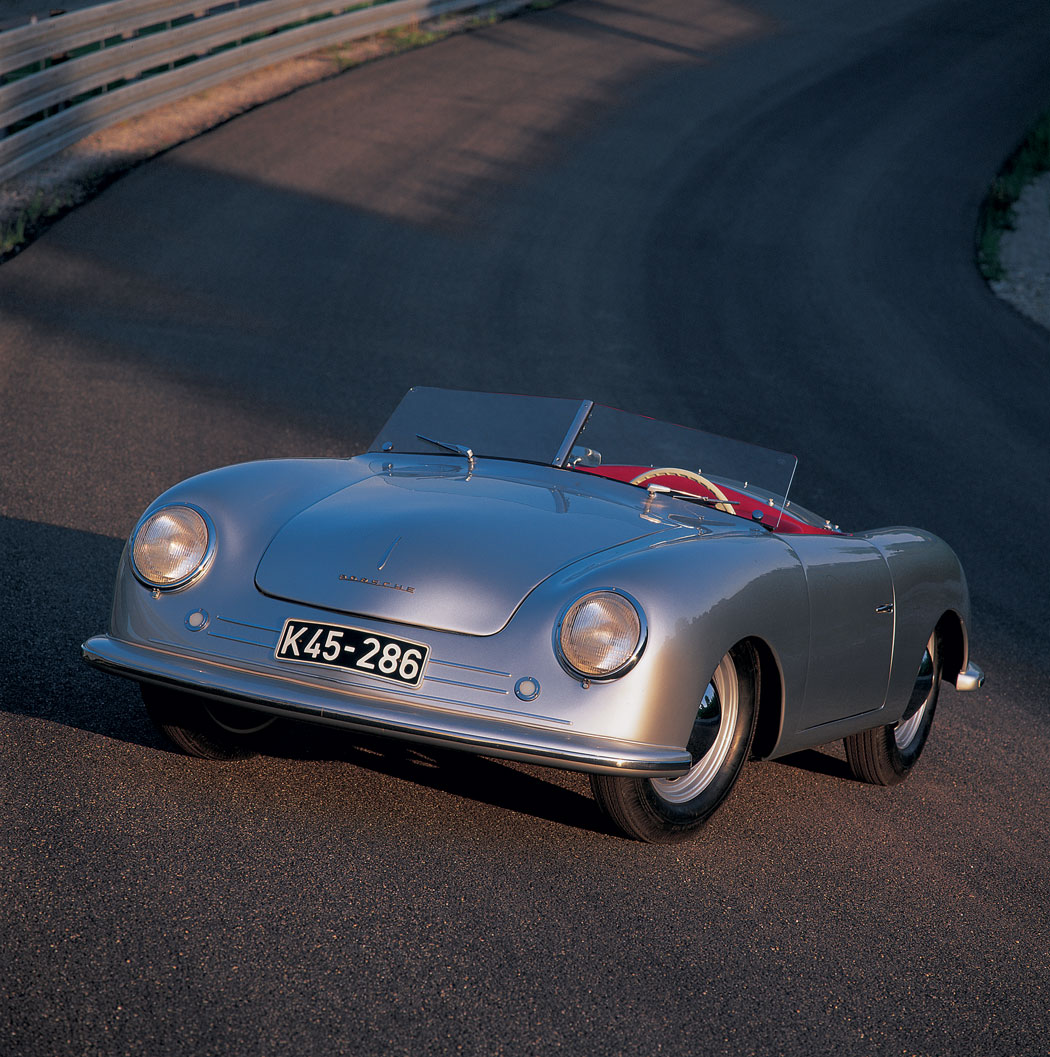From one early Porsche model, an extended family
If you want a new Porsche, you can choose among some 50 model variations from six distinct car and truck lines. But it took just one production model to make the company a successful automaker: the rear-engine 356 sports car of 1948-65.
That’s not to say that all 356s were created equal: There were coupe and open-roof body styles, several four-cylinder engines, an array of model designations and a host of design refinements. While all surviving 356s are collectible, some are truly valuable, with prices well into six figures. The price can roar past $1 million for rare versions with interesting provenance.
“Not often is a car born so naturally as the first Porsche, the Type 356,” explained “The Porsche Book: The Complete History of Types and Models” by Jürgen Barth and Gustav Büsing. “It was a nice little sports car, made up of VW parts, without any research into the market.”
The 356 was born soon after World War II on little more than a whim and some borrowed Volkswagen parts. During the war, the Porsche design works had relocated from Stuttgart, Germany, to Gmünd, Austria, where some 50 aluminum-alloy 356 sports cars were assembled largely by hand in 1948. These so-called Gmund coupes are relatively crude but are valued at up to $1.5 million in concours condition.
By the early 1950s, the company returned to Stuttgart, where American forces had occupied Porsche’s facilities, and production began in earnest. The 1950-54 cars came with engine displacements of 1.1-, 1.3- or 1.5-liters, and they continued to use VW’s swing-axle rear suspension. These early “Pre-A” cars are especially popular with Europeans, according to Tom Tate of Medfield, Mass., past president of the Typ 356 Northeast owners club.
Tate said that Americans tend to prefer the better-handling Type A cars that came next, the 356A of 1955-59. A curved windshield modernized the design; suspension improvements and larger tires helped remedy the Pre-A’s handling quirks.
The 356A “sits low to the ground; it’s more swoopy looking,” Tate said. Chrome override bars on the bumpers provide a bit of bling.
The most bare-bones of the 1950s cars, the Speedster, is highly coveted today. It was a direct response to pleas by Porsche’s American importer, Max Hoffman, who wanted a lighter, less expensive model to compete with the English sports cars pouring into America in the early 1950s.
The Speedster was a basic roadster with a low, removable windshield; a minimal folding top; bucket seats; and side curtains instead of roll-up windows. Initially built for export to the U.S. only, with a starting price below $3,000 (when other 356s were selling for over $4,000), it was an immediate hit in America.
Some 4,000 Speedsters were made in 1954-58, and Tate estimates that perhaps 1,000 have survived. “A lot of them were turned into racecars,” Tate said. “People banged them up and threw them in the trash.”
The Speedster’s style is a big part of its appeal to collectors. “It’s always been that look – the short windshield, the wind in the face,” he said.
At the high end, a 1958 Porsche 356A 1500 GS/GT Carrera Speedster from Jerry Seinfeld’s collection sold for $1.54 million at Gooding & Company’s auction at Amelia Island, Fla., in March 2016.
More typical was the sale of a 1956 Porsche 356A coupe for $119,900 at a Barrett-Jackson auction in Uncasville, Conn., in June 2016.
The 356B of 1960-61, known as the T5, arrived with higher bumpers and headlights. A distinctive body style, the Karmann hardtop known as the Notchback, was briefly offered.
The 356B was significantly revised in 1962. Known as the T6, this design included larger rear windows for the coupe and twin grilles over the engine. The fuel filler moved from inside the front trunk to the fender, and a grille on the front cowl admitted air into the cabin to help prevent window fogging.
Disc brakes arrived with the 356C of 1964. The interior was upgraded and the base engine was dropped.
In late 1964, production of the six-cylinder Porsche 911 began, even as the factory turned out 356C and 356SC models for another year. In September 1965 the last of 73,602 Porsche 356s was built. The next year, the 911-based 912 model began to fill the niche vacated by the 356, using a four-cylinder engine rather than the opposed-six.
Aside from the 1,100cc motor in early pre-As and the powerful but finicky four-cam Carrera engine borrowed from 550 Spyder racing cars, most 356s came with one of four 4-cylinder engines: the Normal unit with 60 horsepower (by the German DIN standard); the Super (75 hp); the Super 90 (90 hp) and finally, the 1964-65 SC (95 hp).
Aside from body style and engine, a 356’s desirability can vary greatly based on equipment – a sliding steel sunroof can add significant value, Tate said – and color.
While he estimates that 40 percent of all 356s were some shade of red when they left the factory, collectors pay a premium for gray, black, yellow or two hues of blue. While black interiors were the norm, today’s buyers seek rarer colors.
Color “makes a real difference on value,” Tate said, “assuming it is the original color.”


